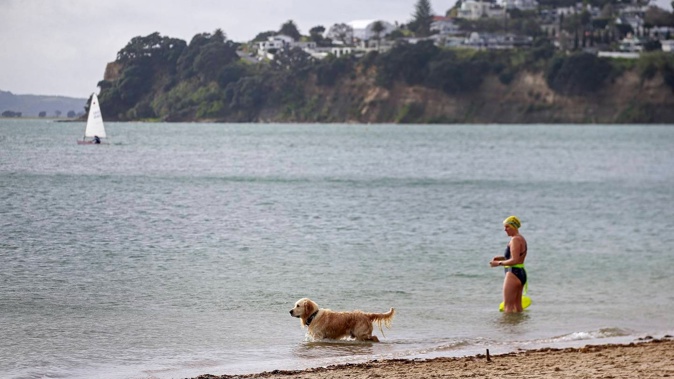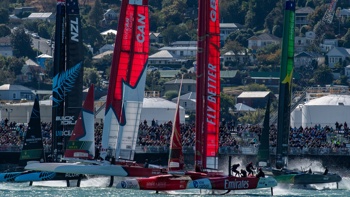
A major research programme has captured just how much New Zealand’s coastal waters have warmed over recent years – breaking a slew of records in the process.
Data collected by the just-concluded $11m Moana Project, led by MetService’s oceanographic division MetOcean Solutions, showed local average sea surface temperatures had run about 1.6C warmer than long-term trends.
“We run marine heatwave forecasts for 12 regions, and over the last two years all these regions have experienced marine heatwaves that last 100 days or longer,” said the project’s science lead, Dr Joao de Souza.
“The Bay of Plenty holds the record, with the longest recorded marine heatwave in New Zealand waters – a whopping 381 days of marine heatwave conditions starting November 2021.”
/cloudfront-ap-southeast-2.images.arcpublishing.com/nzme/OBVSKDMWYZB5NFO73LCDSGJFZY.png) Scientists were surprised to see marine heatwave conditions around New Zealand's coasts persist through winter. Seas have since been cooling with El Nino's arrival. Image / Niwa
Scientists were surprised to see marine heatwave conditions around New Zealand's coasts persist through winter. Seas have since been cooling with El Nino's arrival. Image / Niwa
Even though sea temperatures had cooled down somewhat this winter, with El Niño’s blustery arrival helping to churn up our seas, scientists had still been seeing several regions with prolonged marine heatwave conditions.
As at late last month, the Stewart Island, Chatham Island and Otago regions were observing marine heatwave conditions for longer than 200 days while Napier, Taranaki, Bay of Plenty, Wairarapa and Fiordland had been experiencing marine heatwaves for more than 100 consecutive days.
“These long marine heatwaves mean that over the last two years, many regions have been under marine heatwave conditions longer than they have experienced normal conditions,” de Souza said.
“For example, Cape Reinga, Wairarapa and the Bay of Plenty have spent more than 70 per cent in marine heatwaves, and the Cook Strait, Taranaki, Stewart Island, Chatham Islands and Fiordland have spent more than 50 per cent.”
Some regions had observed some especially dramatic temperature anomalies.
“The whole southern part of the South Island was particularly affected by anomalous warm waters during the last summer,” he said.
/cloudfront-ap-southeast-2.images.arcpublishing.com/nzme/ILSPZZX6YYEBWRRNIGJOG4RRLU.jpg) A bleached sea sponge in Fiordland, where sea temperatures recently soared to 5C above normal. Photo / Victoria University
A bleached sea sponge in Fiordland, where sea temperatures recently soared to 5C above normal. Photo / Victoria University
“Fiordland was 2.4C warmer than the long-term record during the last 12 months, with extremes reaching more than 4.5C above normal.
“Similar anomalies occurred off Otago and Stewart Island, while the Hauraki Gulf was 2.1C warmer than normal.
“The coldest area has been the Banks Peninsula, which had only three marine heatwaves over the last couple of years.
“Although only experiencing marine heatwave conditions 30 per cent of the time, the Banks Peninsula still had more than 200 days of marine heatwaves in two years.”'
He said marine heatwaves had often been linked to La Niña, the climate pattern which has delivered the country plenty of warm, wet weather over a rare three-year run.
“However, recent results from the Moana Project show that the Southern Annular Mode, another similar large-scale climate cycle, better correlates with coastal marine heat waves in New Zealand.
“This Southern Annular Mode affects weather patterns that commonly lead the warming of surface waters.”
With El Niño likely to keep bringing strong westerly flows, while allowing more storm systems from the south to reach New Zealand, meteorologists expect this summer won’t feature the same marine heatwave activity of past years.
Jamie Morton is a specialist in science and environmental reporting. He joined the Herald in 2011 and writes about everything from conservation and climate change to natural hazards and new technology.
Take your Radio, Podcasts and Music with you









